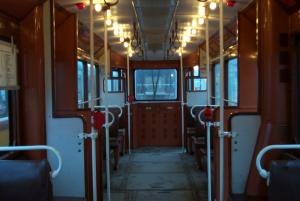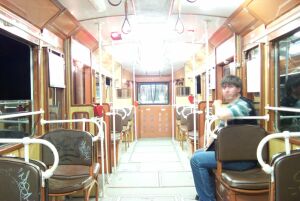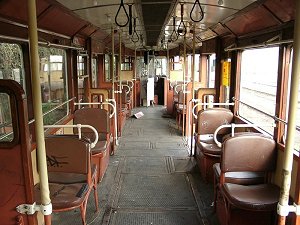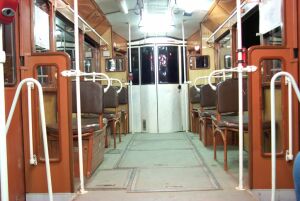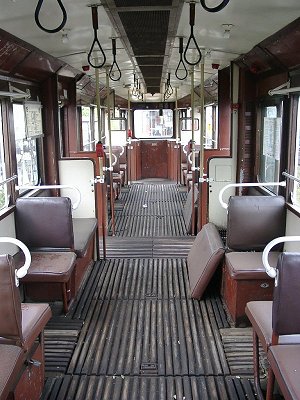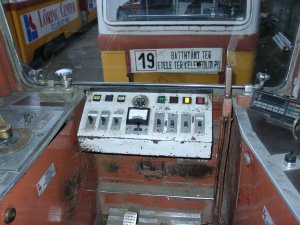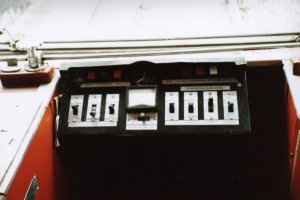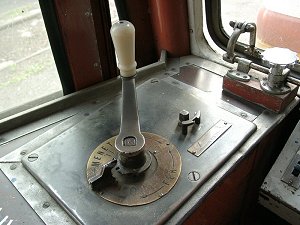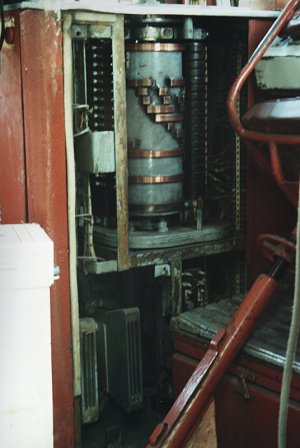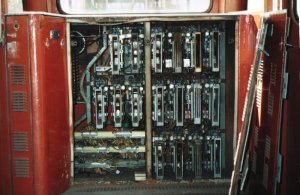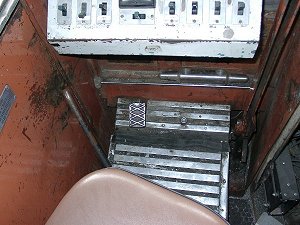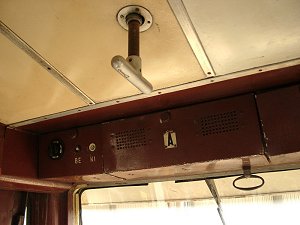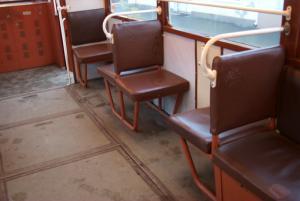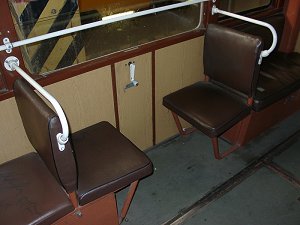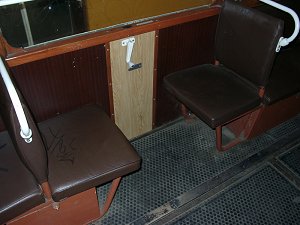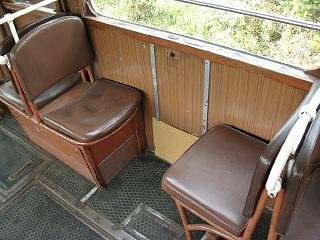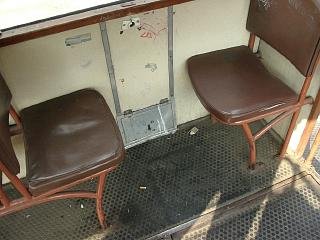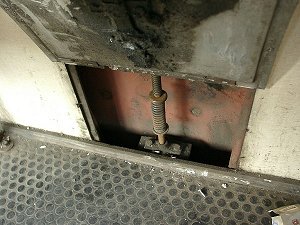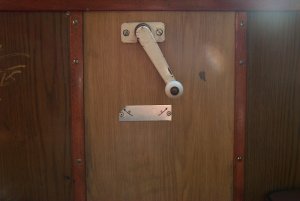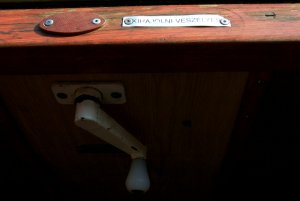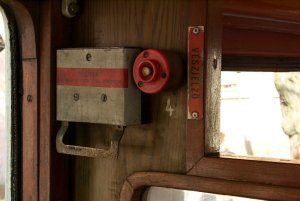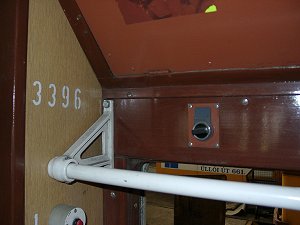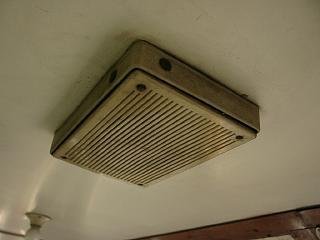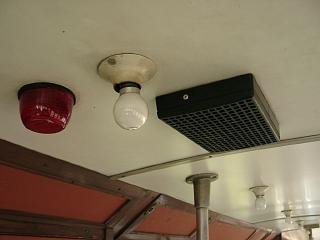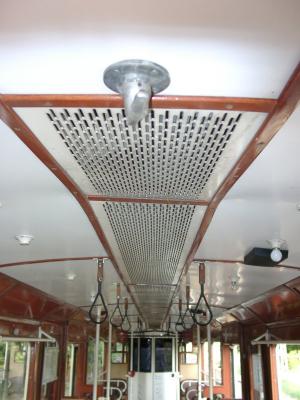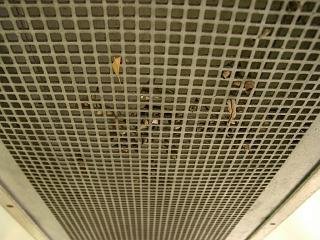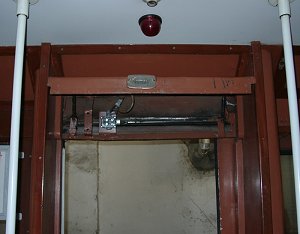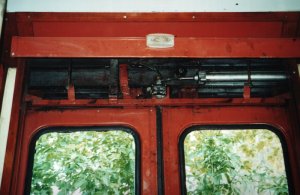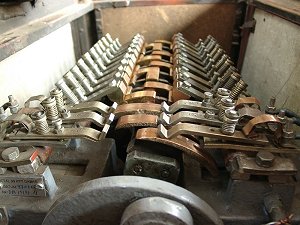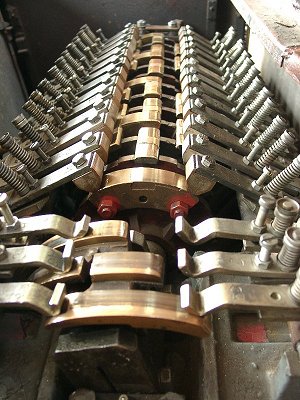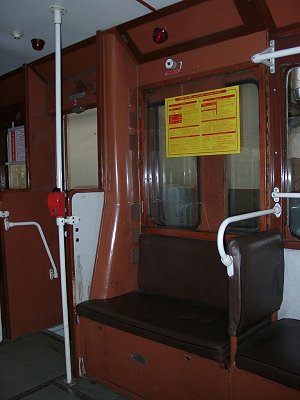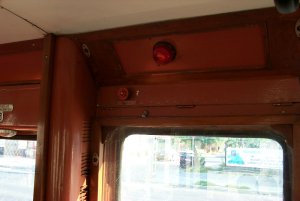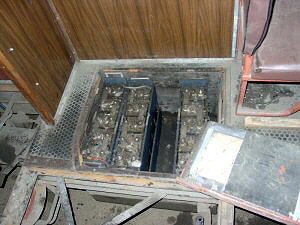budapest
other hungarian
close-up
lost rails
other countries
There are many versions of the UV tramcar which differ from each other in some details. This is mostly because during the almost 50 years of their heavy-duty usage, many parts were modernised, swapped, repaired with other materials, or retrofitted. And the used components depended on the date of the overhaul, and even on what was available at the time for the workshops. On these pages we will take a look at these optical and technical differences, and even at some hidden components of the vehicles.
Remark: some of these detail photos have been made on cars that were already withdrawn and stored for a while, so the conditions you see there might not be the same as when they were still in service.
One of the most striking differences, occuring due to modernisation: originally the UV's had light bulbs in two rows...
... but now many of them have fluorescent lights.
Then: originally UV's did not have a closed driver's cab. Later they received folding "planks" that seperated them from the passengers.
In the last decade they got fully sealed plastic cabin shells.
The original floor covering was made out of wood, as in most old trams. Later this was changed to rubber sheets and then some modern non-slippery covering, which you will see on some interior images later on this page.
A driver's cab as it was used in the late seventies until cca. 2002 (earlier they had a very different dashboard). Note the long lever to the right of the dashboard: that's the actuator of the hand-brake. The clocks in the middle are a voltmeter for the batteries, and a manometer for the pneumatic circuits. There is nothing measuring the speed!
Most of the cars received spring-stored-force parking brakes instead of the hand brake during rehauls: here you can see the lever missing. As for 2005, there are no hand-brake UV's in service anymore. The black covering of the dashboard is just a minor difference.
The controller lever. It doesn't directly switch the resistor circuits!
It rotates this drum with contacts for the auxiliary circuits...
... that switch the main power circuits via these contactors
in the back of the car. The clashing of these contacors is a very typical
sound inside a UV.
The footrest of the driver, with the pedal of the track sanding to the left, and the foot switch of the PA system or the warning bell to the right. The driver's cab of the UV was originally unheated, but later they built a radiator into the footrest. During the cold winter this is of course not enough, so you can see drivers doing their duty in greatcoat. They also experimented with heating of the seat, but I'm not sure if that got into the series.
One of the biggest disadvantage of the UV type is, that the Capital Tramways Company FVV ordered them in 1955/56 without any heating. Low cost was an important thing around then, even despite that the forerunner of the type, the Class 3600 "Stuka" has had heating. Another strange thing, that the didn't even retrofit electric radiators into these vehicles during the decades. Cozy warmth for the passengers was simply not an issue! Only the 20 vehicles of the modernised UV series (MUV) and the training vehicles had heating.
The overcurrent switch and the smaller, round handle of the electromagnetic track-brake.
Let's take a look at the passenger cabin now. The floor and wall covering and the carpeting differs depending on when the car was overhauled. On this picture you can see a lucid scheme...
... while this one has a light decoration with wooden patterns, sustained by wooden straps.
Dark wooden covering and rubber floor.
Light wooden covering with metallic straps.
Tawny covering with metallic straps holding the covering sheets at their places.
The small door at the bottom hides the mechanics of the window roller.
The window roller is a favorite among kids: they love to reel up and down the windows. During sudden storms is the closing of such a window of course an irritating process, because you get wet by the time you got the window fully up :)
The small caption says "Leaning out is dangerous":
The emergency brake lever, and the warning signal.
An extra switch so the cleaner personnel can switch the light on and off while they're working, even if the driver has switched off the lights on the dashboard.
An old PA speaker...
... and a newer one with a light bulb and the warning light for the doors.
A ventillation shaft runs through the middle of the roof. The grill covering it looks like this...
... or this (this picture of course was made on a withdrawn car).
A striking difference between the different production batches are the middle doors. The series UV1, UV2, UV3 have single width middle doors...
... while the UV5 series has a double one.
The direction changer (forward/backward) drum is located under a seat next to the middle door.
The forward/brake switching drum is located next to the previous one. It's actuated by auxiliary current, but on its sidearms the whole nominal voltage gets through.
This is where these drums are located. The thick funnel heading for the roof is where the dissipated heat gets away.
The red emergency warning light goes off (with a loud warning bell sound) when the forward/brake drum catches fire due to strong sparking. In such a case the driver (or a passenger) must put it off with a fire extinguisher. Quick response is needed because of the many wooden part of the tram. Fortunately such fire hazards became rare lately, and the "extinguished" tram can get back ito service after a proper cleaning and the repairment of the affected parts.
The batteries are hidden under the floor.
Pictures by Ákos
Baracsy and Ákos Varga
Back to the top Back to the main page
